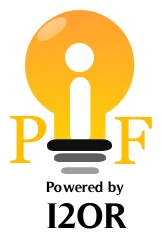Optimizing Power Consumption in IoT Wearable Devices Using VLSI |
| ( Volume 10 Issue 10,October 2024 ) OPEN ACCESS |
| Author(s): |
Venkatesh A, Naveen Kumar V, Sathisha S B |
| Keywords: |
|
IoT Wearable Devices, VLSI, Power Optimization, Low-Power Design, Dynamic Power Management (DPM), Ultra-Low-Power Modes, Custom ASICs, Energy Harvesting, System-On-Chip (SoC), Power-Efficient Communic |
| Abstract: |
|
Management of power consumption in IoT wearable devices through Very Large-Scale Integration (VLSI) is vital in augmenting the capability of these devices, their battery life as well as the total experience that a user has with the device. Due to continuous advances in wearable technology, power consumption management is a concern in order to reach a proper balance between performance and energy. Several approaches concerning VLSI architectures in a smart power management of portable applications are also discussed in this paper, VLSI which includes low power design methodologies, dynamic power management, ultra-low power modes and the use of custom ASICs. Formulated for expert-level, it also covers general ideas such as energy harvester technologies, SoC integration of power management blocks, low power communication protocols, and using advanced semiconductor processes to minimize power usage. thermal control along with the techniques of low power memory technologies show that VLSI has the ability to make wearable devices perform in balance with low power consumption which can make the wearable devices last longer, more reliable and practical for use. These innovations are critical to address the issues of power dominance of wearable devices and guaranteeing future enhancement of wearables in various applications. |
 DOI :
DOI :
|
| Paper Statistics: |
| Cite this Article: |
| Click here to get all Styles of Citation using DOI of the article. |
 Click Here for
Click Here for Track Your Paper

 Call for Paper
Call for Paper
